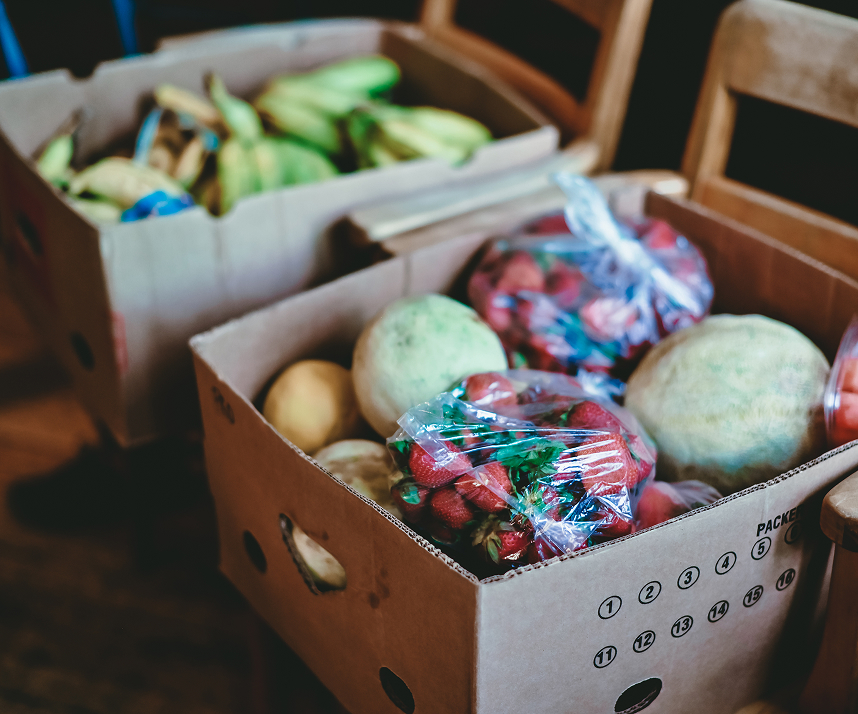Food systems, or behind the scenes of our pantries
- Opinion
Écrit par Marie-Pier Ethier
25 April 2024
*****This text is intended to be a starting point for a collective reflection on the fundamental fight against food waste and is not intended as a criticism. It is not intended to be a one-size-fits-all solution, but rather an invitation to take part in the discussion to rethink our existing systems. ***
The words used to name various concepts may seem incidental.
Yet they are of critical importance in managing the issue of food waste within the infrastructure that feeds us. Whether it is hiding in the surplus or the loss, it slips through the net that we are trying to install to eliminate it.
To find out where it is sneaking, you first have to take the time to look at food systems a little more closely. Once upon a time…
The Iceberg, or the emergence of a system
The availability of such a large quantity of off-season and international products is recent in our modern history, and has been made possible through the gradual implementation of a large-scale supply system.
One of the first concrete examples is the very popular iceberg lettuce.
It was in the late 1800s that the American seed company W. Atlee Burpee and Co. marketed the Iceberg. The company is primarily interested in responding to a need for varieties that are better adapted to the North American climate than the European varieties available on the seed market at that time.
Although low in vitamins but crisp and refreshing, the biggest advantage of the Iceberg remains its shelf life. Indeed, it can travel very long distances (at the time by train), placing it on blocks of ice and thus distribute it throughout North America. Initially reserved for the wealthiest, its access is slowly becoming more popular and it is gradually gaining a place on all tables, now available year-round.
It is a strong symbol of the beginnings of our current food systems, the infrastructure in «tense flow».
In what?! In “tense flow”?!
Broadly speaking, it is a system that does not require massive stockpiling or storage, thus limiting the costs associated with it as well as losses. Instead, continuous production is carried out in dedicated areas of the country/continent, and possibly the world, to maximize year-round availability of normally seasonal foods. Distributors, retailers and consumers do not have to build up stocks since production and supply are (theoretically) constant.
System faults : upstream of the chain…
One of the drawbacks with the flow system is that to maintain a similar supply from one region to another, there must be centralization of infrastructure.
Basically, this means that the decisions of a banner are made according to a strategy which will then spread over all its points of sale.
This centralization leads to treat food as a commodity, a material good, whose appearance and quantity must be practically equal everywhere, at all times, and at competitive prices. Like an assembly line, a model based on a technical and productivist approach was applied to the food industry.
In doing so, the varieties are selected primarily for yield, look and shelf life. This allows them to travel great distances over long periods of time and undergo a lot of handling. A vicious circle is then created, with choices based mainly on profitability to satisfy the habits of a clientele increasingly accustomed to such abundance.
Thus, to ensure this constant supply, there is a tendency to favour external players (foreign suppliers, who produce year-round) at the expense of seasonal local producers. By the way, it disadvantages the local economy and food self-sufficiency, not to mention the environmental impacts.
… and downstream.
And waste, where does it come in all this?
Every link in food systems, from production to the retailer.
But the question arises: what makes a system initially designed to meet very high demand and limit losses lead to waste?
Supply, demand and choice of words
Operating primarily on a supply and demand basis, supplies can be difficult to forecast despite good planning and strong purchasing records.
Cultural holidays (Halloween, Christmas, national holidays, etc.), fashion effects and one-time events are examples of when demand for a product suddenly becomes higher and then drops drastically once the buzz is over. We often end up with surpluses, which potentially become unsold. If they do not find a buyer, they will be declared as losses.
With this vocabulary that excludes the term “waste” from the equation, the issue boils down to a figure in the column of financial losses, measured in money. By measuring the weight (which is calculated in tonnes per year), the problem is more tangible and the search for solutions becomes unavoidable.
Linear economy VS circular economy
Little notions of economy here!
The current system is mainly designed in linear economy. It can be seen as a chain, with a beginning (over-consumption of resources) and an end (waste, pollution and waste). Each step between extraction and use involves a quantity of waste, a very large part of which is still usable but which is not systematically returned to the circuit.

In another way, a circular economy is a complementary model that is also based on an extractivist logic of linear type. However, the advantage is that it reduces both the pressure on the environment, the demand for new resources, and the waste of residual materials that are quite usable and necessary for other companies, by reintegrating them into the circuit.

Silo work : each for himself
Why, if the circular economy is a powerful tool to curb waste, isn’t it already the number one criterion of our current business models? Among other things because it asks :
- much broader and longer-term thinking and logistics;
- Increased collaboration between different industry players and sectors;
- Pooling resources and facilities to facilitate this collaboration.
The current system favours an individual approach where one obtains financial returns and a better short-term profitability, in a ‘each for himself’ mode.
On the one hand, this approach can fuel mistrust between competitors, reduce the sharing of ideas and, at the same time, potential collaborations.
On the other hand, even if we overcome the barrier of competition, uniting to waste less is a strategy that is not always accessible, even with a lot of will. Indeed, it is a process that can be energy-intensive and resource-intensive (financial, human and time), a price that everyone must pay. s can not afford to ensure the sustainability of their business.
All these factors show that we are not creating the right conditions to significantly reduce surpluses, unsold and losses.
“So we’re screwed?!”
Absolutely not.
Of course, fluctuations in supply and demand will always occur, but the surplus should be able to reintegrate into the circuit before being transformed into compost! Small steps and initiatives count, but systemic changes are needed :
- Prioritizing reduction at source with programs that further fund circular economy-based business plans, including proactive thinking, from ecodesign to end-of-life responsible management.
- Provide adequate funding for change actors; this involves financially encouraging collaboration and the pooling of resources between sectors to facilitate better cohesion and management. Having effective tools, such as planning that tackles waste head-on, are necessary pillars that mobilize financial resources for businesses and organizations.
- Investing and focusing on territorial specificities is beneficial and generates benefits for the communities involved, examples of which are: promoting local know-how and agriculture; promote short circuits in order to reduce the number of intermediaries between the field and the plate; financially support research and development of food autonomy to make it accessible to as many people as possible and at the same time reduce losses,…
- Raise awareness of sustainable food systems; commit to review aesthetic criteria, which accustom people to standards that cause huge losses from the production stage, while rethinking ways of doing things; More and more models of proposals for sustainable food systems are emerging and developing solutions that just need to be heard.
A drop of water in the ocean? Not so fast…
As an.ice consumer, food systems are like an iceberg (a real one, not lettuce!) whose tip is often only visible.
As mentioned above, many solutions depend on government and the willingness of each industry player to adapt, which, at the individual level, can discourage more than one.
If this is your case, the third and final part of this file may change your mind (hopefully!)!
In the next text, we focus exclusively on the scope of action of the individual and his or her significant power in the balance by :
- proposals for concrete actions to be applied in daily life;
- several additional resources to better assess its impact and develop solutions tailored to our individual realities;
- the importance of dialogue (again!) and engaging in conversation about it; sharing, opening up and (re)connecting to food and the people who produce it;
- … and more!
See you next month for the last part of the dossier !

